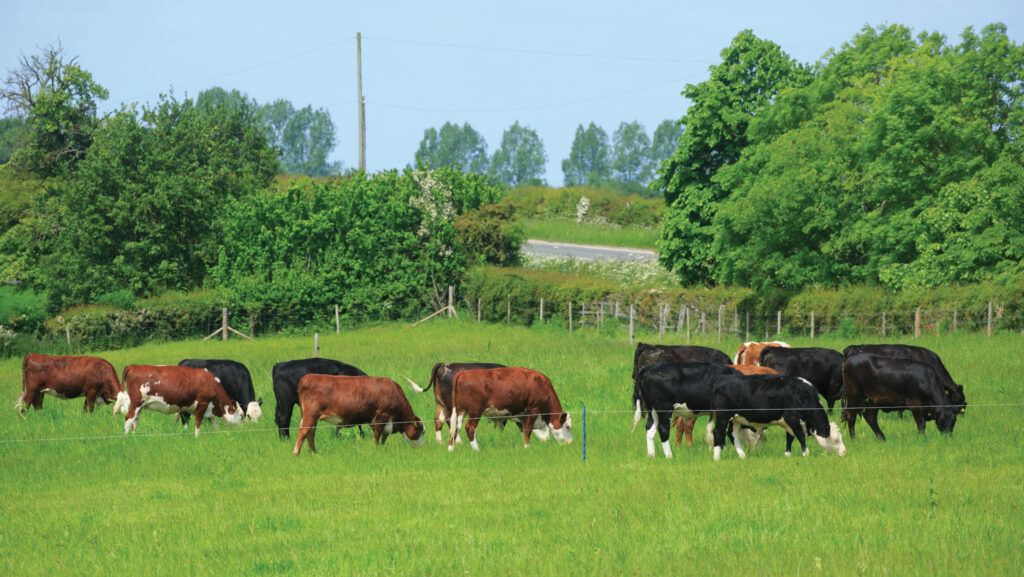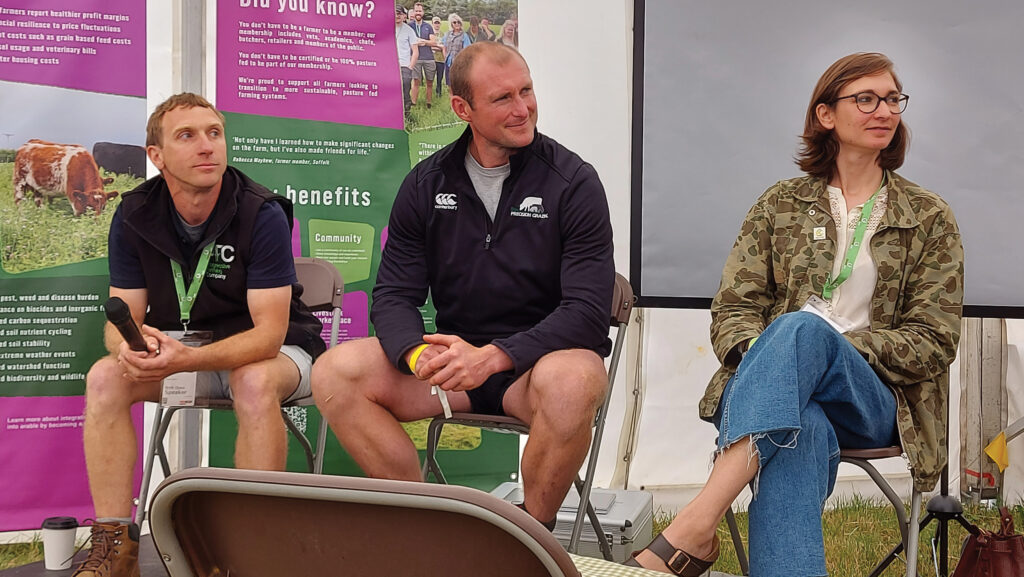Tips to improve productivity of grazed grass
 © Tim Scrivener
© Tim Scrivener Taking steps to move from traditional set stocking to some form of rotational grazing takes confidence – and a willingness to view mistakes as learning experiences.
What is important is to do something rather than nothing, according to James Daniel of grassland consultancy Precision Grazing.
“You’ve got to start doing something to get on that feedback cycle and learn by doing.
“You need to get your eye in, have a go and gain some confidence. Even if that something doesn’t go to plan, it’s not a fail.
See also: How a shift in grazing grew more beef for less money
“You’re either winning or you’re learning,” he said at the recent Groundswell Festival in Hertfordshire.
James said his approach when helping farmers start rotational grazing was to work out how many cows should be in a paddock, how big that paddock should be, and how often they should be moved.
He would then look at the whole farm context to determine the optimal stocking rate for the business.
“We don’t advise a particular method or technique; they’re all tools in the box.
“But when we start to [plan and] manage the grazing, we get a plethora of benefits from biodiversity, resilience, productivity, profitability.”
Frequency of stock moves
Farmers can reap significant benefits by moving from set stocking to some form of managed grazing, even if that does not involve daily moves.
“By moving stock at least every five days, so animals can’t eat the regrowth, you’ll achieve much higher productivity,” said James.
“That might be rocking back and forwards between two fields, or access to four fields, with one week in each field – that’s a massive improvement.”
The benefits from rest and rotation were improved plant productivity above and below ground, increased filtration rates, improved soil structure, increase in forage quality and quantity, better animal performance or reduced housing period, and reduced inputs, he explained.
“The more often you move them, the higher productivity you’ll achieve, but if you can follow the five-day-on time rule, you’ll probably get 80% of the benefit.”
By doing this, a set-stocked field carrying 1.2 cows a hectare (0.5 cows an acre) could be expected to produce 50% more dry matter. This means it would carry 1.85 cows a hectare (0.75 cows an acre), he added.
“It’s the 80:20 rule: 80% of the benefit for 20% of the effort.”
Chris Berry, who runs 900 sheep and 60 suckler cows at Higher Thornton Farm, near Exeter, Devon, said he had “slackened” his grazing system from moving stock daily.
He now uses three-day moves with four groups of sheep plus lambs, with cattle grazing with them or following them.
“This has made things “a bit easier, a bit of a compromise between one-day and five-day shifts”.
Planning for extreme weather
Extremes in weather can make it challenging to work out what the optimal position is. The answer was to have a plan B, said James.
This could be building up a surplus store of hay or silage to fill a grass growth gap, or extending the grazing round during a dry or wet period to reduce poaching. Building confidence to push a longer rotation would also help.
“[This means] having more feed ahead of you so you can see 30, 40 or 50 days ahead.”
Having some tradeable stock (not breeding replacements) in the business provides a further insurance policy as they can be sold to reduce feed requirements.
“There’s a bit of a tendency to think we have to finish everything. Be a bit more flexible – sell some stores in a dry period,” he advised.
Chris said he had faced just this issue. “That was a big mindset change – probably more than anything – not seeing it as a failure if I don’t finish the stock,” he admitted.
But, on his dry farm, there is no sense in holding onto cattle when grazing is limited.
“[Otherwise,] I’m going to have to graze tighter through the winter and go into next spring with zero grass.
“Then I’m going to be feeding my sheep a lot of concentrate feed, and next summer I’ll be in a vicious cycle where I’m putting in a lot more feed.”
Data needed for decision-making
The more extreme the season, the more value there is in collecting farm information to be able to make better feed decisions.
This entails a walk or drive around the farm, noting the estimated pasture cover in each field to give an idea of feed on-farm. That data can then be run against stock demand.
“You might say, today I’ve got 40 days’ worth of feed on-farm. If I think it’s going to rain within 40 days, I hold my position,” James explained.
However, if there were 20 days of feed, that might trigger a decision to sell some stock.
“It’s hard to forego income from taking sheep or cattle to heavier weights, but it’s the hidden cost of carrying [feeding] them, on ewe body condition, pregnancy rates, farm cover and so on.
“The higher stocked you are and the drier the season, the more value there is in doing a monthly appraisal of stock and feed on-farm and using that to make decisions,” he said.
Is overgrazing an issue?
Overgrazing is having animals in one place for too long, not too many animals.
“It’s more damaging for plant productivity and soil health to have 10 animals in a field for 100 days than 100 animals in a field for 10 days,” said James.

Chris Berry, James Daniel and Claire Beaumont © MAG/Judith Tooth
Claire Beaumont, who runs a herd of Shorthorn cattle on meadows, rough grazing and wood pasture at Gowbarrow Hall Farm in the Lake District, with her husband Sam, pointed out that encroachment of rushes and other less-palatable plants was a symptom of overgrazing.
“If you’re set stocking, the animals are always going back to what they want, grazing back those nice grasses, and you’re making a perfect environment for those rushes. So, your farm [productive area] is getting smaller and smaller,” she said.
Grass species and quality
On her farm, Claire said she had no problem with grass going to seed.
However, James pointed out that in a ryegrass-dominant pasture, it is an issue.
“Ryegrass is probably the hardest thing to manage in the UK when thinking about more regenerative systems and building soil health and resilience through longer rotations,” he said.
“If it’s not ryegrass, I’m not too worried in a cattle context about grass going to seed.
“I’m looking more at the animals, at rumen fill after they’ve been shifted, and at dung consistency,” he added.
Touring the country this summer, James said he saw “super-dry” conditions, with cattle going into big covers with a lot of seeded grass.
“There’s a part of me inside my head saying that’s rubbish, they’ll never do on that, but you get in the paddock, and you look at the dung consistency, and it’s perfect.
“So, I think we have to look more at what the animals are telling us than what the pasture looks like.”
He advised using more native grasses when reseeding, especially on a dry farm.
If ryegrass is in the system, he said “we need to slowly extend the rotation and try and find the right stock class to give those other species a chance to come through and improve that quality for the longer term”.
